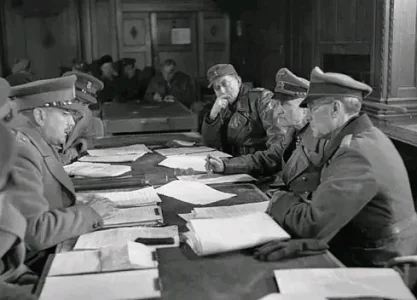- Joined
- Jan 31, 2020
- Messages
- 7,597
- Points
- 259
Lieutenant-General Charles Foulkes (left) faces General Reichilt (right) during a conference on the surrender of German forces in the Netherlands, 5 May 1945.

Lieutenant-General Foulkes and General Reichilt negotiating the surrender of German forces in the Netherlands, 5 May 1945.

Lieutenant-General Foulkes and General Reichilt negotiating the surrender of German forces in the Netherlands, 5 May 1945.





